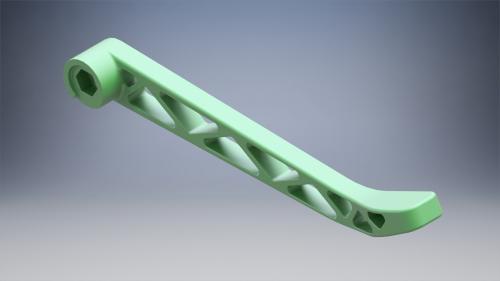Anisoprint, a Russian manufacturer of continuous carbon-fiber FFF 3D printers and materials, will showcase its patent-pending technologies for high-performance composite materials at the JEC World 2019 international composites show in Paris next week.
At the show, the Anisoprint Robotic Solution a dual-nozzle, Composite Filament Coextrusion (CFC) technology will be presented. It is capable of to processing plastics such as PETG, PEEK, and ABS with finer reinforcement.
“I am convinced that composites will become the new materials of the 21st century,” said Fedor Antonov,” CEO of Antisoprint.
“These materials, having directional properties by their nature, allow us to optimize not only the shape of a part, but its internal structure. Look how the evolution creates its structural materials – from tree trunks to bones, all of these materials have directional properties, i.e., anisotropy.”
The Anisoprint Robotic Solution
Founded in 2015, Anisoprint develops desktop 3D printers capable of processing composite materials, producing structural parts with increased mechanical properties. In 2017, the company presented the latest iteration of its continuous fiber reinforced polymer (CFRP) composite material 3D printer at a conference in Skolkovo, Russia.
Anisoprint technology integrates a composite reinforcing fiber in the form of a tow (a coarse, broken fiber) made of thousands of ultrathin carbon monofilaments, into a plastic during 3D printing. This improves adhesion between the polymers and the fiber. As a result, 3D printed parts 25 times stronger than pure plastic and 7 times lighter than steel are said to be produced.
The latest Robotic Solution print heads can be installed on similar desktop 3D printers and controlled by the company’s CAM software. It is currently being utilized by U.S. aerospace company Airbus, the Luxembourg Institute of Science and Technology (LIST) and the Technical University of Munich (TUM) for spare parts and tooling purposes.

Anisoprint in practice
Last year, a student engineering team from Moscow Polytechnic University (MPU) used an Anisoprint 3D printer to create a buoyancy lever for Russian para-athlete, Dmitry Pavlenko’s diving gear. Made from carbon-fiber ABS, this lever controls the air-circulation valves of a diver whilst underwater. The students attributed the lever’s low hydrodynamic resistance to this composite material.
The JEC World international composites show runs from the March 12th to the 14th. Anisoprint can be found at booth S82 Hall 5 at the JEC exhibition.

For more on 3D printing in news, subscribe to the 3D Printing Industry Newsletter, follow us on Twitter, like us on Facebook.
Furthermore, join 3D Printing Jobs for opportunities in additive manufacturing.
Featured image shows an earlier iteration of the Ansioprint 3D printer. Photo by Michael Petch.


